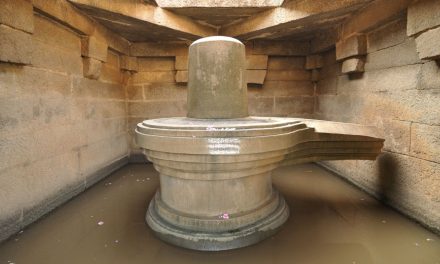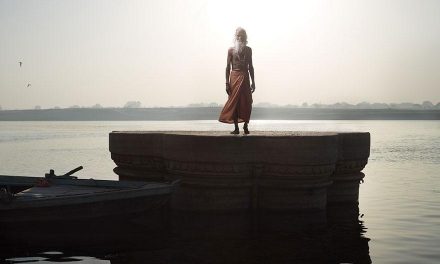From an airplane approaching the airport in Mumbai (the mega-city once called Bombay), a massive slum spreads below like a sea of rusted metal whipped up by a steady, salty wind. But from a speeding car on the city’s new highways, the slums where 60 percent of the city’s 18 million people live often aren’t visible. And that’s why Prabhu, my taxi driver, is asking for directions for a third time. We’re looking for Jogeshwari Cave, a great Hindu monument that now lies within, and beneath, a dense slum community in northwest Mumbai.
The tight proximity of shops and homes can be seen from the cave’s back
Prabhu and I, along with Shri Manish, from the Archaeological Survey of India (ASI), turn off the Western Express Highway and onto progressively smaller roads until we reach a dirt track into a dense neighborhood called Pratap Nagar. Prabhu needs to use the horn a lot–as an “excuse me”–to clear the road of bicycles, beggars, and schoolchildren in tidy uniforms and knee socks.
The buildings may be ramshackle, improvised, and illegal, but they’re sturdy, with multiple floors. Bollywood music pumps out of vendors’ stalls. Blue jeans hang on clotheslines. The smell of street food and burnt cooking oil tickles my nose. Manish leans forward to guide Prabhu and we stop in front of a narrow path, muddy with wastewater, that descends between rising rock walls to a dark doorway.
Jogeshwari, created around 1,500 years ago, is a rock-cut cave shrine to the Hindu god Shiva. In its scale, the cave complex rivals several UNESCO World Heritage sites nearby: the spectacular cave temples of Ajanta, Elephanta, and Ellora. In its design and ornamentation, Jogeshwari is transitional, with features reminiscent of older Buddhist caves and Hindu statues less refined than those that would appear later–a missing link in an evolutionary chain. “It connects the greatest Buddhist monument [Ajanta] with what many would say is the greatest Hindu monument [Elephanta],” says Walter Spink, an art historian at the University of Michigan who has studied Indian cave temples for decades.
Jogeshwari’s archaeological and art historical importance is matched only by its advanced state of neglect. Until recently, it was filled with garbage and squatters, and now the slum above closes in tighter and sewage leaks down the walls. Overlooked by scholars, neglected by the ASI, and forgotten by the people of Mumbai, Jogeshwari languishes while its progeny, the spectacular cave on Elephanta Island in Mumbai Harbor, has become one of the city’s most visited and treasured tourist destinations.












